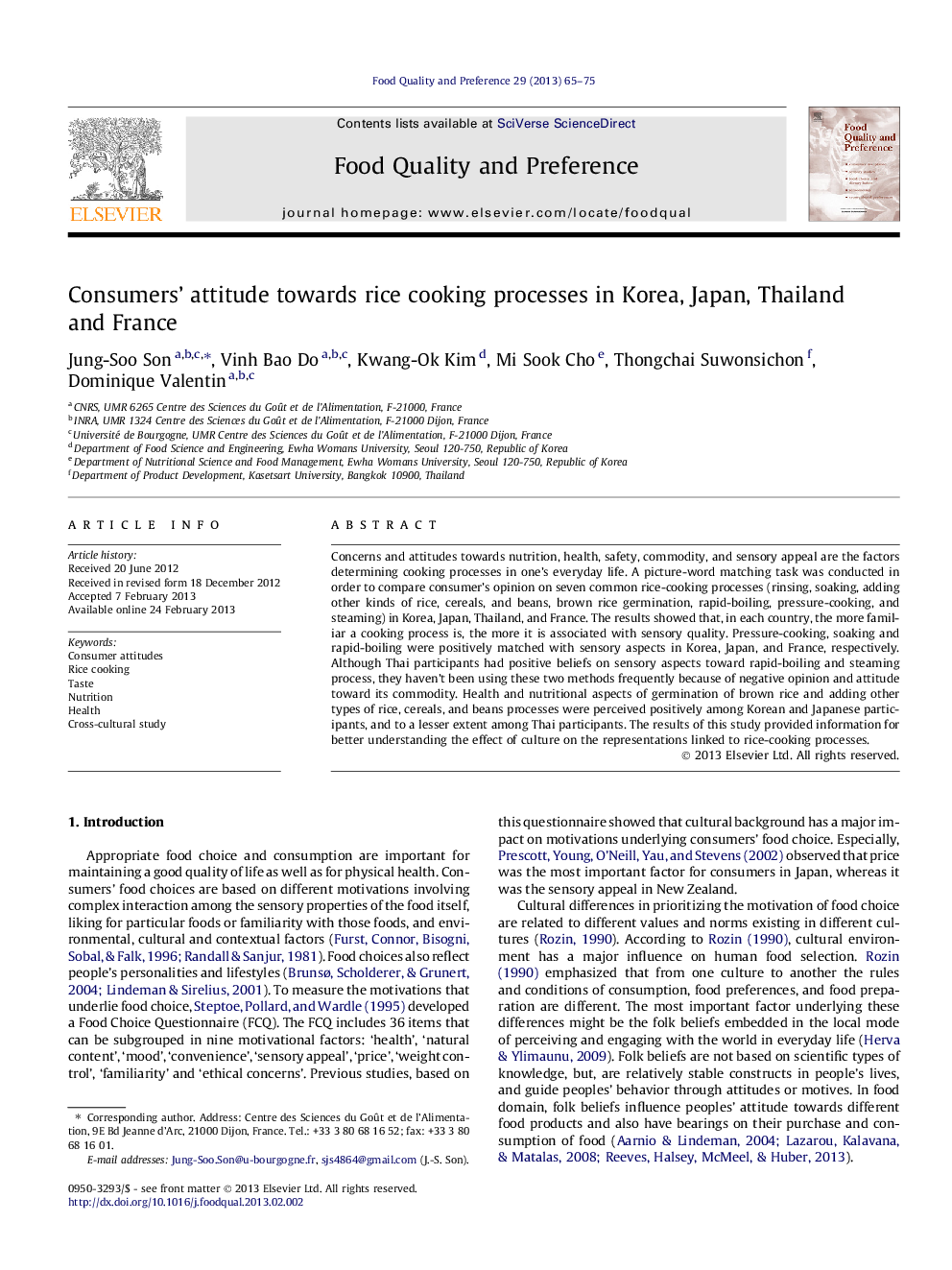| Article ID | Journal | Published Year | Pages | File Type |
|---|---|---|---|---|
| 4317341 | Food Quality and Preference | 2013 | 11 Pages |
Concerns and attitudes towards nutrition, health, safety, commodity, and sensory appeal are the factors determining cooking processes in one’s everyday life. A picture-word matching task was conducted in order to compare consumer’s opinion on seven common rice-cooking processes (rinsing, soaking, adding other kinds of rice, cereals, and beans, brown rice germination, rapid-boiling, pressure-cooking, and steaming) in Korea, Japan, Thailand, and France. The results showed that, in each country, the more familiar a cooking process is, the more it is associated with sensory quality. Pressure-cooking, soaking and rapid-boiling were positively matched with sensory aspects in Korea, Japan, and France, respectively. Although Thai participants had positive beliefs on sensory aspects toward rapid-boiling and steaming process, they haven’t been using these two methods frequently because of negative opinion and attitude toward its commodity. Health and nutritional aspects of germination of brown rice and adding other types of rice, cereals, and beans processes were perceived positively among Korean and Japanese participants, and to a lesser extent among Thai participants. The results of this study provided information for better understanding the effect of culture on the representations linked to rice-cooking processes.
► Cultural differences in perception of rice-cooking processes were studied. ► The more popular a cooking method is, the more it is associated with sensory benefits. ► People tend to develop more sophisticated naïve theories toward familiar cooking method.
